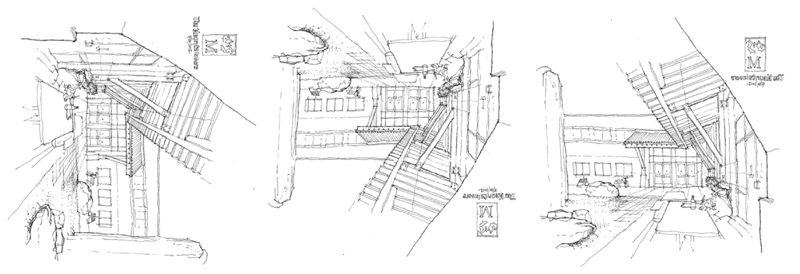This unusual phrase came to mind the other day when thinking about how to describe how I view a scene, both in real life and in its graphic form in a drawing. While “looking askance” currently connotes viewing with envy, suspicion, or even contempt, I would apply its more literal meaning—to look obliquely, with a side glance.
In preparing to draw, I often find myself taking a sideways glance at a scene. This slightly off-center view of things gives me a better sense of value patterns and compositional possibilities. Something similar is occuring, I think, when you see someone with their head turned or cocked slightly in evaluating a drawing or painting. I can’t fully explain how or why this happens, but someone more knowledgeable about the human eye and our optical system could provide a physiological reason. Perhaps a sideways glance uses not the cone cells required for our visual acuity but rather the rod cells, which are responsible for black-and-white vision and our peripheral view of the world.
Related to this is how I try to look at my own work-in-progress with “fresh eyes.” When we know what it is that we are drawing, we can often fool ourselves that others will see it in the same way as we do. But to see our own work the way others might, it can be helpful to turn a drawing upside down or sideways, or view it through a mirror. Doing this forces us to see in a new way the purely graphical aspects of our drawing or painting without our knowledge of the subject influencing our self-critique.


